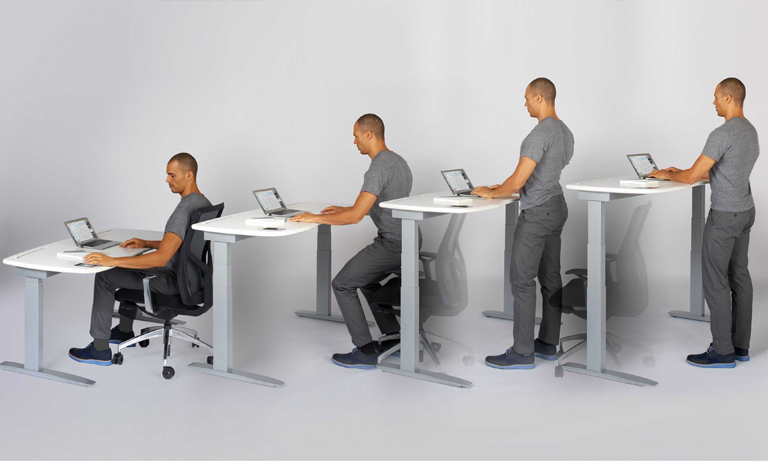 In a survey by Get Britain Standing and the British Heart Foundation, 80 per cent of the respondents said they feared that they spend too long at their desks
In a survey by Get Britain Standing and the British Heart Foundation, 80 per cent of the respondents said they feared that they spend too long at their desksWorkers worldwide are being inundated with advice about spending more of their day standing up, but is this really the key to a healthier workforce? In the UK, campaigns from organisations such as the British Heart Foundation and Get Britain Standing are encouraging workers to stand up more; however, according to workplace equipment supplier Slingsby, standing for extended periods can cause its own discomfort without the use of specialist products.
In a survey by Get Britain Standing and the British Heart Foundation, 80 per cent of the respondents said they feared that they spend too long at their desks. The study of 2,000 office workers also found that 37 per cent of men and 45 per cent of women spend less than half an hour standing during their time at work.
Slingsby’s director of group sales and marketing, Lee Wright, said that employees in all industries spend too long sitting at work, not just office workers. He said this leads to an increased risk of people suffering from serious health problems, ranging from back problems to diabetes and heart disease.
Mr Wright added that seated workers and office staff in increasing numbers are adopting standing positions as they work, reflecting the recognition that workers spending as much time as possible moving around at work is a sensible approach.
He explained that workers should try to stand for a minimum of two hours every day and increase this amount as they get used to the practice. Other countries are embracing this kind of pattern and it is believed that more than three-quarters (80 per cent) of Scandinavian office workers have been provided with adjustable desks to allow them to stand or sit to work. This facilitates what many experts believe to be the optimum working environment – one where workers can change position frequently rather than standing or sitting for too long.
Mr Wright points out that standing up is natural for humans; however, maintaining the same position over long periods can lead to strain on the shoulders, neck, lower back, legs and feet, causing pain and discomfort. That is why workers can benefit most from changing position and standing and sitting at different intervals during the day.
While modern adjustable desks can offer this facility, wider factors also need to be considered, according to Mr Wright. Workers who spend long periods standing can benefit from anti-fatigue matting or soft flooring rather than hard floors such as metal or concrete surfaces. Other methods to increase comfort and decrease problems include using specialist stools and wearing appropriate footwear.
Join Over 40,000 Recruiters. Get our latest articles weekly, all FREE – SEND ME ARTICLES
Recruiters love this COMPLETE set of Accredited Recruitment & HR Training – View Training Brochure








